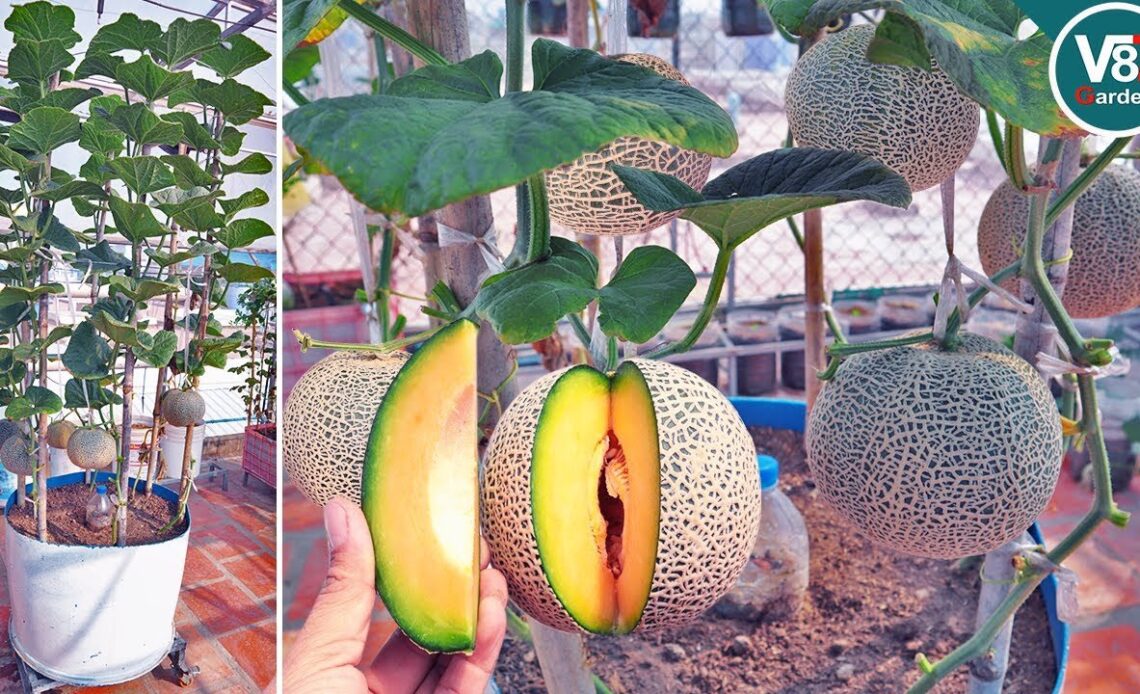Growing melons at home is an enjoyable and rewarding experience. If you have limited space, don’t worry You can grow melons in containers using kitchen waste, which is both eco-friendly and cost-effective. This method not only helps you reduce waste but also provides you with fresh and delicious fruit right from your garden. In this guide, we’ll show you how to grow melons in a container using kitchen scraps
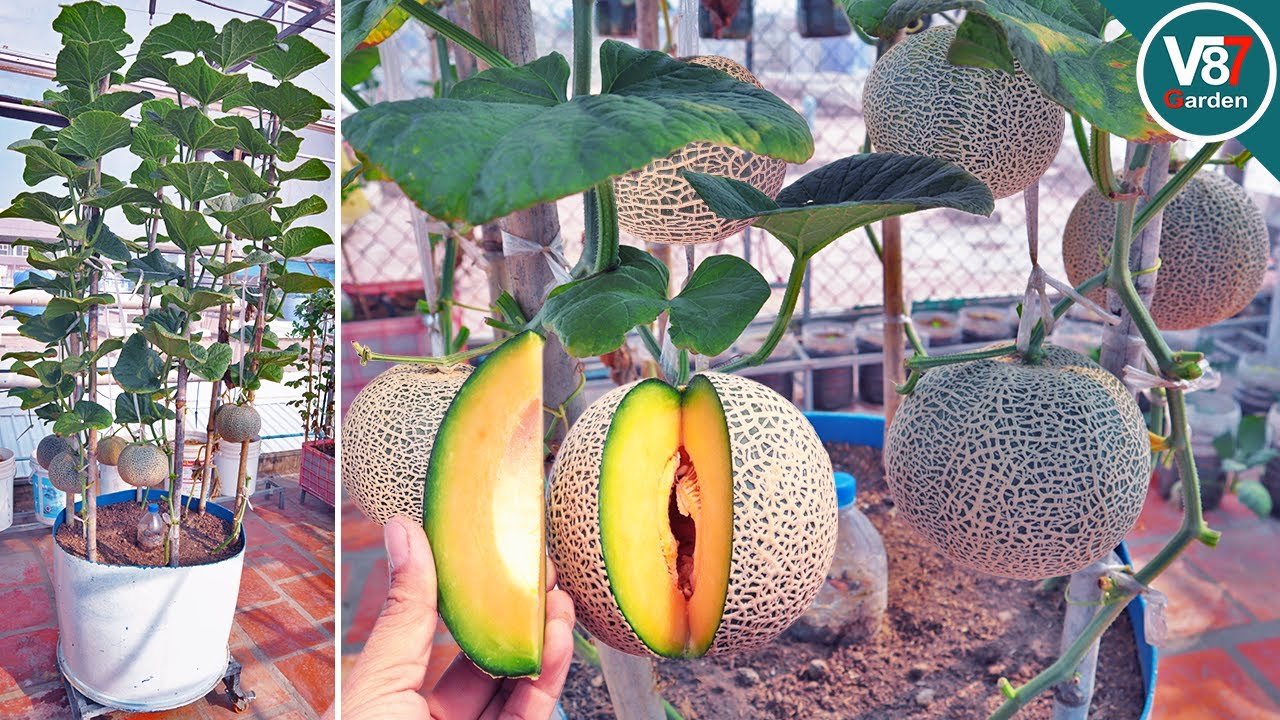
### Why Grow Melons in Containers?
Before we dive into the process, let’s talk about why growing melons in containers is a great option:
1. **Space-Efficient**: Containers are perfect for small spaces like balconies, patios, or even windowsills.
2. **Easy Access**: Growing in containers means you can place your melons wherever they get the best sunlight.
3. **Control Over Soil**: You can control the soil composition, drainage, and watering to give your melons the best chance to thrive.
4. **Sustainable**: Using kitchen waste helps to reduce landfill waste and recycle valuable nutrients for your plants.
### Materials You’ll Need
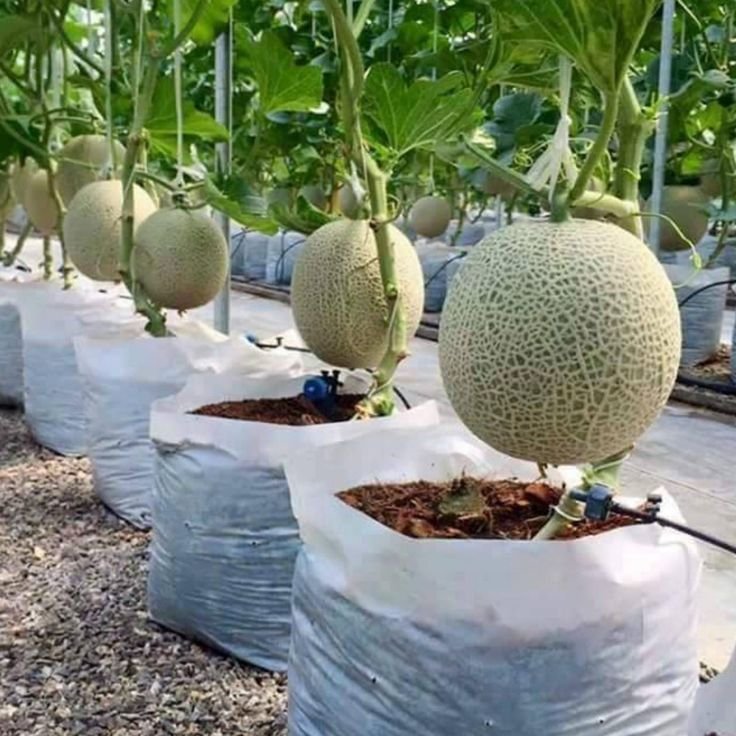
Before starting, gather the following materials:
– **Container**: A large pot or container with drainage holes (at least 18 inches in diameter)
– **Kitchen waste**: Vegetable scraps, fruit peels, coffee grounds, eggshells, etc.
– **Soil**: High-quality potting soil or a mix of compost and garden soil
– **Melon seeds**: Choose a melon variety that is suitable for container growth, such as cantaloupe or watermelon.
– **Water**: For regular watering
### Step-by-Step Process to Grow Melons in Containers
#### 1. **Prepare the Container**
Start by choosing a large container that has proper drainage holes at the bottom. This ensures that the water can flow out, preventing root rot.
If you’re using kitchen waste, it’s crucial to create a layer of compost or soil at the bottom to promote drainage.
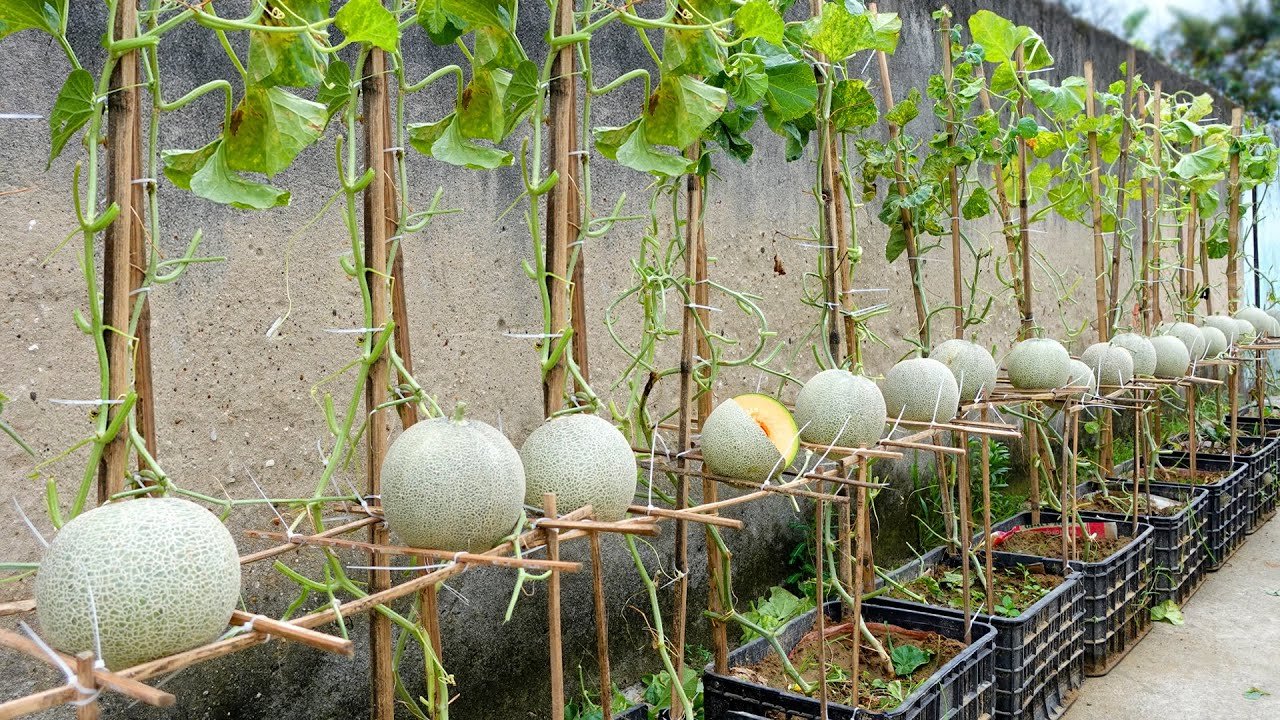
#### 2. **Layer Kitchen Waste at the Bottom**
Layer your container with kitchen waste. This will serve as an organic nutrient source for the plants. Here’s how you can do it:
– **Vegetable scraps**: Use potato peels, carrot tops, and onion skins.
– **Fruit peels**: Banana peels, citrus peels, and apple cores are great.
– **Coffee grounds and eggshells**: These help to improve soil structure and add necessary minerals.
Make sure to chop up the scraps into smaller pieces to speed up decomposition.
#### 3. **Add a Layer of Soil**
On top of the kitchen waste, add a layer of soil (around 4–6 inches). You can use a mix of compost and potting soil for a nutrient-rich base.
#### 4. **Plant the Melon Seeds**
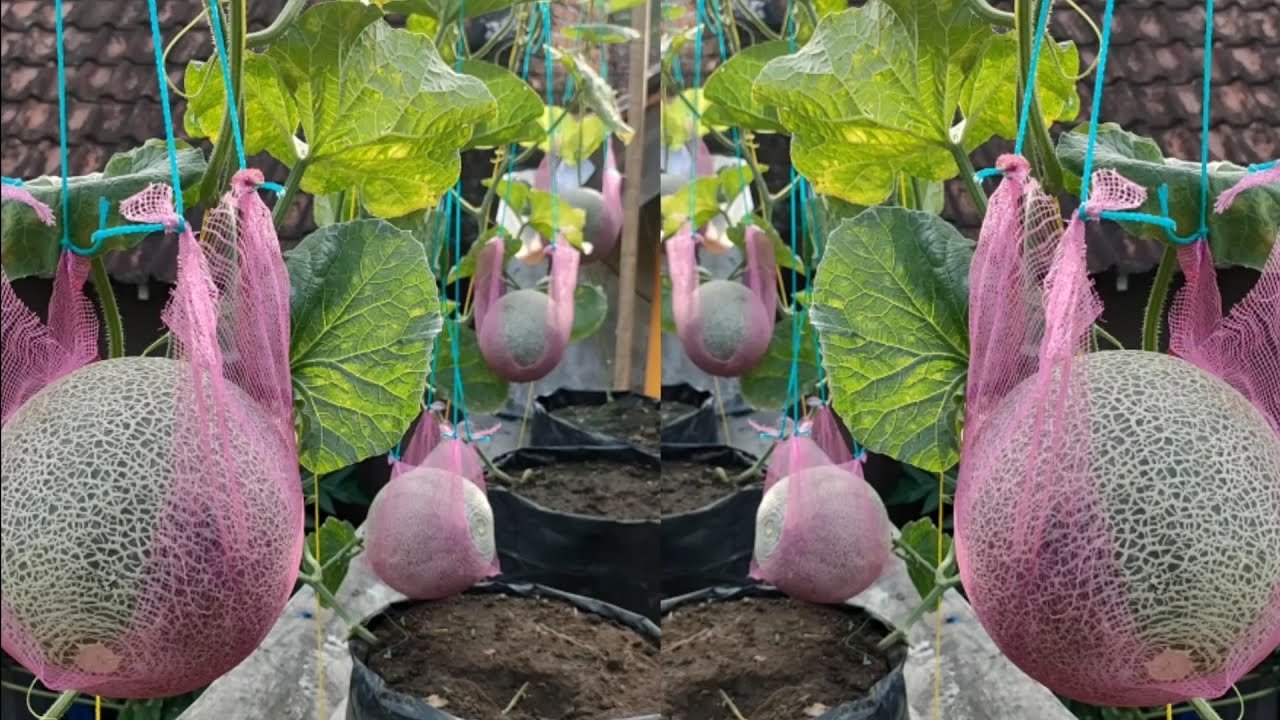
Plant your melon seeds about 1 inch deep in the soil. Leave enough space between each seed (about 12 inches apart) for the melons to grow. If you’re growing more than one plant, you can plant them in separate containers.
#### 5. **Water the Seeds**
After planting, water the seeds well. Make sure the soil is moist, but not waterlogged. Keep the container in a sunny spot, as melons need a lot of sunlight to grow—ideally, 6–8 hours of direct sunlight per day.
#### 6. **Regular Care and Maintenance**
– **Watering**: Water your melons regularly, especially during hot weather. However, ensure the soil is well-drained to prevent overwatering.
– **Fertilizing**: If your kitchen waste compost layer is rich enough, you might not need additional fertilizer. If not, use organic fertilizer every few weeks.
– **Pruning**: As the vines grow, you may want to prune them to help the plant focus its energy on producing fruit.
#### 7. **Support the Growing Vines**
As your melons grow, they will need support. You can create a small trellis or use a string to help the vines grow vertically. This saves space and keeps the melons clean, off the ground.
#### 8. **Harvesting**
Melons take about 70–90 days to mature, depending on the variety. You’ll know they’re ready to harvest when the fruit has reached its full size and the skin begins to turn a deeper color.
### Tips for Success
– **Temperature**: Melons thrive in warm temperatures, so be sure to plant them when the weather is warm (70°F or higher).
– **Melon Variety**: Choose small melon varieties like cantaloupe or watermelon, as they are better suited for container growth.
– **Composting**: The decomposing kitchen waste provides valuable nutrients to your melon plants, improving the soil quality.
Growing melons in a container using kitchen waste is a fantastic way to enjoy fresh fruit while also reducing waste. It’s a simple, sustainable, and rewarding gardening technique. By following the steps above and giving your melons the right care, you’ll soon be enjoying delicious, homegrown melons right from your container garden. Happy gardening 🌱🍉
By incorporating kitchen waste into your gardening routine, you not only save money on fertilizers but also help the environment. Whether you’re an experienced gardener or just starting, this eco-friendly method is a great way to grow melons in your own home
